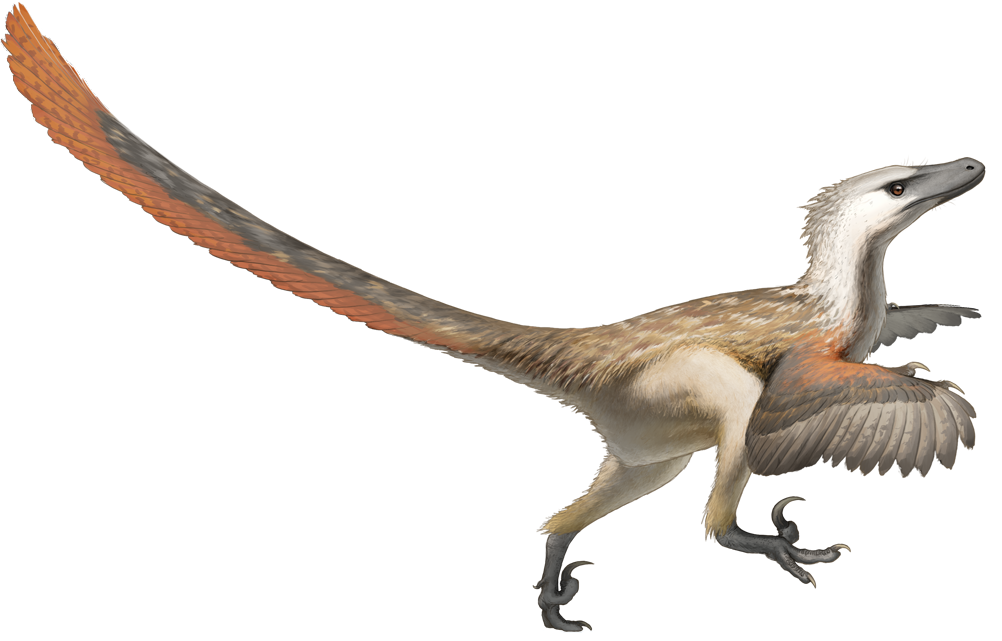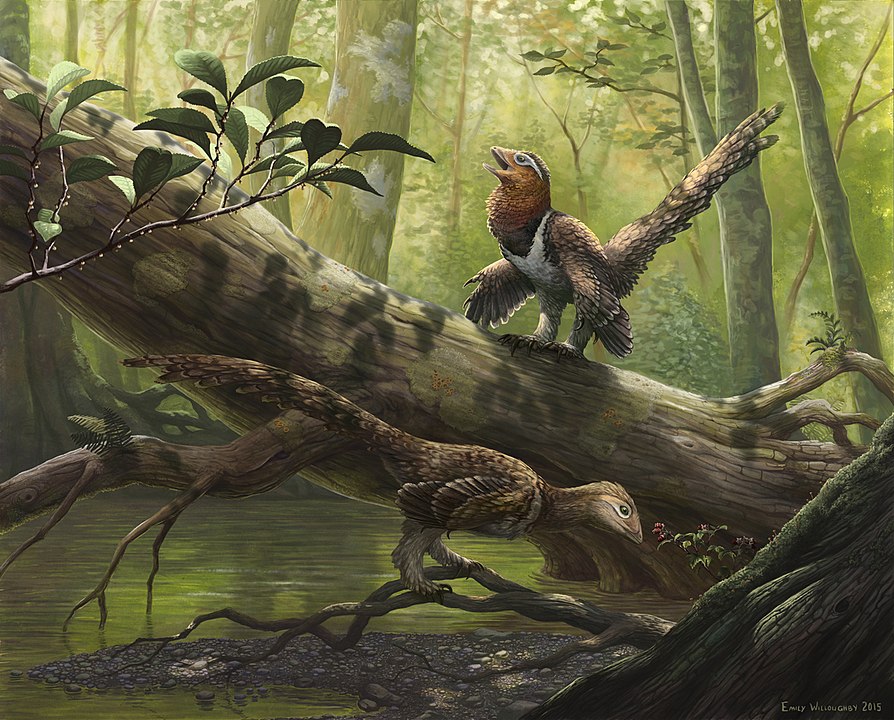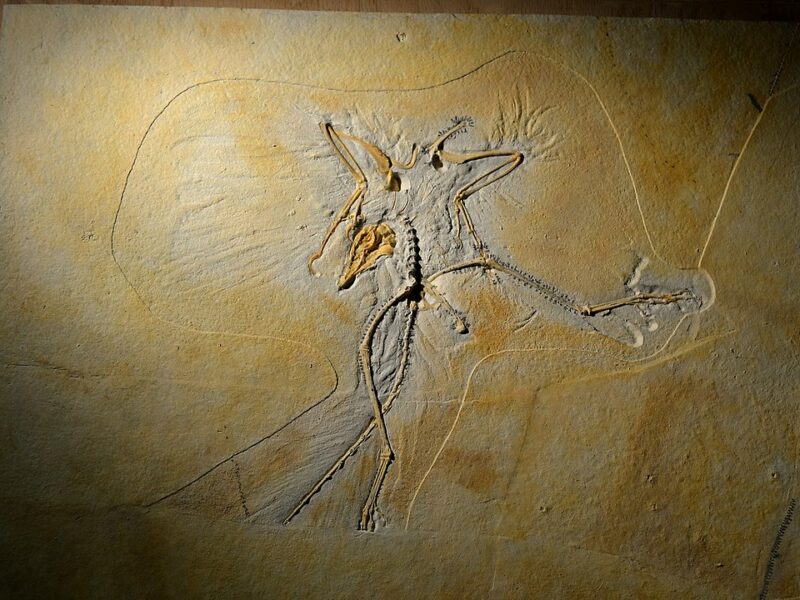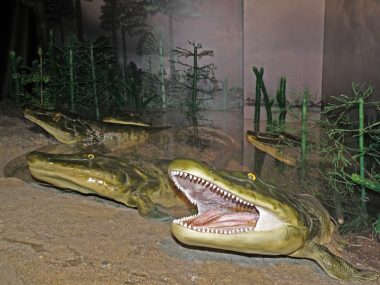
The year was 1861. Charles Darwin was still alive. Only two years before, he had published his famous work, On the Origin of the Species. Over in southern Germany, at the Solnhofen Quarry, fascinating new fossils were being found. In the summer of that year, an unknown quarrier unearthed a beautifully fossilized feather. It was the oldest feather which had ever been found at the time. Shortly afterwards, a skeleton bearing similar feathers emerged into the spotlight. They soon realized that this was not the fossil of a typical bird. It bore a long, bony tail and had sharp claws on its wings. We now know these fossils by the name Archaeopteryx.
In 1866 Darwin released the fourth edition of On the Origin of the Species. In a section entitled: “On the sudden Appearance of whole Groups of allied Species”, he attempted to explain why taxa were already so diverse when they first appeared in the fossil record. Other scientists of his time argued that a series of slow transitions would be expected if all life was related. Darwin appealed to the incompleteness of the fossil record as the solution to this problem. One example which he mentioned was Archaeopteryx:
“that strange bird, the Archaeopteryx, with a long lizard-like tail, bearing a pair of feathers on each joint, and with its wings furnished with two free claws, has been discovered in the oolitic slates of Solnhofen. Hardly any recent discovery shows more forcibly than this how little we as yet know of the former inhabitants of the world.”
– 4th edition
Archaeopteryx Was Only the Beginning

This was only the beginning. Since the discovery of Archaeopteryx, scientists have uncovered a plethora of bird-like dinosaurs. Some of our old favorites like Velociraptor have undergone a feathery makeover because of recent discoveries. Strange, newly discovered dinosaurs, such as Microraptor, may have been capable of flight, with long pennaceous feathers on their front and hind limbs! Still others, like Yutyrannus, were towering theropods covered in a shaggy coat of filamentous plumage.
Unfortunately, these fossils have become deeply associated with the narrative of evolution. Conventional scientists believe that they represent various branches on the family tree of birds. With so many “transitional-looking” fossils, how could anyone doubt that birds evolved from dinosaurs?
Many creationists react negatively to the concept of feathered dinosaurs because of this stigma. As a result, they have called into question the existence of feathers on non-avian dinosaurs. The presence of feathers has become a major part of the debate because of our perception of what it means to be a bird. In our grade school science classes, we learned that feathers were unique to birds. All birds have feathers, and no other living creatures do.
A Sneak Peek

However, emerging discoveries must necessarily lead us to question our preconceptions. This article is the first of our mini series on feathered dinosaurs. Over the course of this week we will examine and attempt to answer some of the important questions surrounding this debate. Part two of this series will delve into definitions, examining what a bird is, and how they should be classified. In part three, we will discuss some of the fossils believed to represent feathered dinosaurs. Part four will examine whether the filaments found on these dinosaurs are feathers, or if they could be interpreted differently. Finally, in part five, we will discuss how these fossils fit into a creationist view of origins.
It is our hope that this series stimulates further discussion and research within the creationist community. Since the existence of feathered dinosaurs is a topic on which the Bible is silent, we hope that disagreements on this subject do not lead to further division. Rather, we should emphasize our points of agreement and build each other up in our common faith.
Feathered by Design Series
Maws, Claws, and Classification Laws (Part II)
Dino-Birds and Fuzzy Lizards (Part III)
Much Ado About Feathers (Part IV)
According to Their Kinds (Part V)












Great topic. this because organized creationism should allow the option that theropod dinosaurs were not dinosaurs or reptiles but just boring flightless ground birds. yes they had feathers in a atrophied state or a great state.
the dinosaurs was a myth. Instead these creatures are just varieties in the kinds we now have.